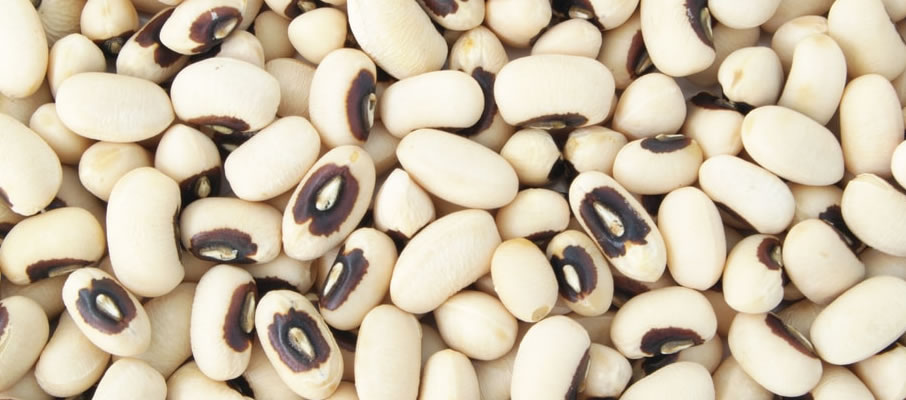
Cowpea (Vigna unguiculata)
Local names in Kenya (Kunde, Alot bo, Likhubi)
Overview
Cowpea is an annual herbaceous legume and a dual-purpose security crop grown for its seeds which is high in protein and immature leaves and seeds can also be consumed. The seeds are usually cooked and made in stew and curries or grounded into flour or paste. It belongs to the bean family and is one of the oldest crops to be farmed. Their growth habit is climbing, spreading or erect. Cowpeas are mainly important in the marginal rainfall areas because they are well adapted to dry climate and suitable for a variety of intercropping systems. The crop exhibits much variation in growth habit, leaf shape, flower color and seed size and color. The plant root nodule is able to fix atmospheric Nitrogen making it a valuable crop for resource poor farmers.
Altitude range
Cowpea require an altitudes of 1200 – 1500 (1850) masl
Soil type and conditions
Well-drained, light and fairly fertile sandy soils and it can tolerate a wide range of soil conditions including low fertility and acidic soils but it is sensitive to water logging. It does well within a pH range of 5.6-6.0 (6.5). Cowpea nutrient requirements include: N, P, K, Mg, Ca, S, B, Cu, Fe, Mn, Mo, Zn
Temperature range
The temperatures should be 20-35oC but it can tolerate shading Rainfall The rainfall should be 200 – 400 mm p.a
Rainfall
The rainfall should be 200 – 400 mm p.a.
Steps during land preparation
Deep ploughing the bed once or twice to a medium till.
- Select planting material from healthy plants free of pests and diseases, and from recommended sources.
- Seeds should be selected from the same colour for desired variety.
- During selection growth habit (climbing, erect, spreading), flower colour, maturity period and seed type should be considered
- For grain production, colour and size of seeds are important to consumers depending on their preferences.


Varieties include: Katumani 80 (K80), Ken kunde, Kunde 1, Machakos 66, MTW66,610
- Plant the seeds on flat or raised beds, Planting is done at a depth of 2.5-5 cm.
- Pure stand spacing is 45-60 cm Intercropping should be 20-40 cm apart Seed rate is 17-25kg/ha (2-3 seeds/hole) when sown in rows and the seed-rate when broadcasting is done is 10-40 kg/ha
- Add manure and fertilizers to the soil in the right amounts to provide the required plant nutrients for vigorous crop growth

Grain filling stage
Apply water daily in case of prolonged drought.
- Weed control at least twice before flowering after which the plant covers the ground and suppresses the weeds.
- Integrated weed management (IWM) strategy should be employed and embraced.
Add right amounts of manure and fertilizers to the soil to provide the required plant nutrients for vigorous crop growth.
- Thin to 1 seedling/hole 2 weeks after emergence to 10-20 cm between plants.
- Do crop rotation to improve the fertility of the soil.
- Control soil erosion using an appropriate method

Germination stage
Pests include;
Field pests include Bean fly (Ophiomyia phaseoli), Cowpea jassids (Eurymela spp), Cowpea aphids (Aphis craccivora), White flies, Pod borer (Maruca testulalis) and storage pests which include: Bean bruchid (Acanthosce/ides obtectus)
The bean fly (Ophiomyia phaseoli) and the affected cowpea leaf


Cowpea aphids (Aphis craccivora) and its effects on the cowpea pod



Affected pods due to storage pests

Control of cowpea field and storage pests
Use Integrated Pest Management (IPM)
Use tolerant/ resistant varieties
Use cultural methods such as weeding and intercropping
Judicious seed dressing and spraying at weekly intervals using specific chemicals
Crop rotation
Cow peas are moderately tolerant to Flower thrips (Megalutrothrips sjostedi), pod borers and leaf hoppers (Empoasca signata)
Major diseases include: Cowpea wilt (Fusarium oxysporum), Damping off, Anthracnose, Brown blotch, Rust, Fusarium wilt, Cercospora leaf spot, Sceptoria leaf spot, Scab blight and Stem canker
Cowpea wilt (Fusarium oxysporum)


Damping off


Anthracnose


Brown blotch and Fusarium wilt


Cercospora leaf spot

Blight

Control of cowpea diseases
Use available resistant/tolerant varieties
Treat seeds with fungicides
Do crop rotation
Use healthy/ clean/ certified seed of tolerant / resistant varieties
Control weeds and rogue diseased plants
Maturity of the cowpea is dependent on the size of the leaves and time after planting.

Maturity
Harvest the pod 2-3 months after planting depending on the variety
Harvest of leaves is done 3-4 weeks after planting.
This can be done by uprooting the whole plant or plucking the leaves at 1-week interval.
Harvesting of pods is done at 3 different stages of maturity depending on usage that is for green snaps, for green mature stage and for dry pods when all the pods have turned brown
Cowpea will produce 0.3 t/ha - 4.5 t/ha
Harvesting of leaves should be done at correct intervals to avoid wastage of the leaves

Store dried cowpeas in hermetic bags, e.g. PICS bags, Agro-Z, etc.
Dry the leaves in diffuse light aeration (dehydration) for later consumption
Refrigerate green cowpea for later consumption
Dry the pods on the mats or tarpaulins for about 2-3 days to a moisture content of 13%, then thresh and winnow. When cowpea are dry, they make loud, sharp noise when dropped on the ground
Treat the cowpea with dust / ash against storage pest
Post-harvest pest management of Bean Bruchid should be done
